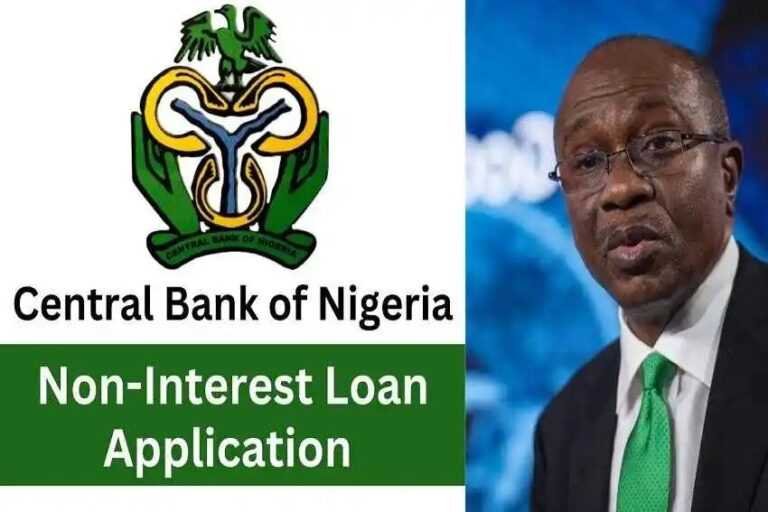Loan Debt Relief Application, Process, Benefits, Eligibility, Requirements: A Comprehensive Guide
Are you drowning in student loan debt and seeking a lifeline to financial freedom? The good news is that there are avenues available to provide relief through loan forgiveness programs. In this guide, we’ll explore the Loan Debt Relief Application process, its benefits, eligibility criteria, and requirements to help you navigate the path towards financial liberation. Let’s delve into the nitty-gritty of how you can apply for student loan forgiveness, making the process as seamless as possible.
Understanding Loan Debt Relief: What’s it all about?
Loan debt relief is a crucial lifeline for those grappling with the burden of student loans. It’s a mechanism designed to alleviate the financial strain that student loan debt can impose on individuals. The relief is often provided through forgiveness programs, and understanding the application process, benefits, eligibility criteria, and requirements is paramount for those seeking a way out of the debt labyrinth.
What is Loan Debt Relief?
Loan debt relief refers to the various programs and initiatives aimed at helping individuals manage and, in some cases, forgive their student loans. These programs are put in place to ease the financial burden on borrowers, providing a pathway to financial stability.
The Loan Debt Relief Application Process: Step by Step
Navigating the Loan Debt Relief Application process can be daunting, but breaking it down into manageable steps can make the journey more straightforward. Here’s a step-by-step guide to help you through the application process:
1. Research Available Programs
Before diving into the application process, it’s crucial to research and identify the loan forgiveness programs available. Programs like Public Service Loan Forgiveness (PSLF) or income-driven repayment plans could be viable options.
2. Gather Necessary Documentation
Once you’ve identified the program that suits your situation, gather all the necessary documentation. This may include proof of income, employment certification forms, and other relevant financial documents.
3. Complete the Application Form
Each forgiveness program will have its specific application form. Ensure that you carefully complete all sections, providing accurate and up-to-date information. Incomplete or inaccurate forms may lead to delays or rejections.
4. Submit Your Application
Once your application is complete, submit it through the designated channel. Be aware of any deadlines and ensure timely submission to avoid missing out on potential relief opportunities.
5. Follow Up
After submitting your application, it’s essential to follow up regularly to check on its status. This proactive approach ensures that any issues or discrepancies can be addressed promptly.
Top Lenders for Personal Loan Refinancing
When it comes to personal loan refinancing, choosing the right lender is crucial. Here are some reputable options:
- LendingTree: Known for its extensive network of lenders, LendingTree allows you to compare personalized loan offers, making it easier to find the best terms for your situation.
- Upstart: Upstart considers more than just your credit score during the approval process, making it a viable option for individuals with scores as low as 580.
- Reach Financial: This lender specializes in personal loans tailored for debt consolidation and credit card refinancing. Their 24-hour funding timeline is a notable perk for those in need of quick financial relief.
Eligibility Criteria for Loan Debt Relief Program
Loan forgiveness programs have specific eligibility criteria that applicants must meet to qualify for relief. Let’s break down some common eligibility requirements:
1. Employment in Qualifying Organizations
Many forgiveness programs, such as PSLF, require applicants to work for eligible non-profit organizations or government agencies. Full-time employment in these qualifying organizations is a key criterion.
2. Meeting Payment Requirements
Some programs necessitate a minimum number of eligible loan payments. For instance, PSLF typically requires 120 monthly qualifying payments while working for an eligible employer.
3. Income Requirements
Certain forgiveness programs may consider income as a factor. Applicants might need to meet specific income thresholds to qualify for relief. This requirement aims to ensure that those with genuine financial need receive the intended assistance.
4. Credit Score
Most lenders prefer applicants with a credit score of 580 or higher. However, some, like Upstart, consider alternative factors for approval.
5. Debt-to-Income Ratio
Lenders assess your ability to manage additional debt by evaluating your debt-to-income ratio. This ratio represents the percentage of your income that goes towards debt payments.
Employment History
A stable employment history can boost your chances of approval. Lenders often prefer borrowers with a consistent source of income.
Benefits of Loan Debt Relief
Seeking loan debt relief comes with a myriad of benefits that extend beyond the immediate financial assistance. Let’s explore the positive aspects of participating in loan forgiveness programs:
1. Financial Freedom
The primary benefit is, of course, the attainment of financial freedom. Loan debt relief allows individuals to break free from the shackles of debt, enabling them to redirect their financial resources towards other life goals.
2. Reduced Stress and Anxiety
Dealing with overwhelming student loan debt can take a toll on mental health. Loan debt relief provides a reprieve from the constant stress and anxiety associated with financial burdens.
3. Increased Economic Mobility
By freeing individuals from the constraints of hefty student loan payments, loan debt relief enhances economic mobility. It allows borrowers to pursue opportunities that align with their passions and career aspirations.
Requirements for Loan Debt Relief: What You Need to Know
Understanding the specific requirements for loan debt relief is crucial for a successful application. Here are some key requirements you should be aware of:
1. Employment Certification
For programs like PSLF, obtaining employment certification from your qualifying employer is essential. This certification verifies your eligibility based on your employment status.
2. Timely Payments
Meeting the required number of timely loan payments is a fundamental requirement for most forgiveness programs. Ensure that you consistently make on-time payments to progress towards debt relief.
3. Adherence to Program Guidelines
Each loan forgiveness program has its set of guidelines. Adhering to these guidelines is imperative to ensure that you remain eligible for the relief you seek.
Real-Life Examples: Navigating Loan Debt Relief
Let’s delve into real-life scenarios to illustrate how individuals successfully navigated the Loan Debt Relief Application, Process, Benefits, Eligibility, Requirements.
Case Study 1: Sarah’s Journey to PSLF
Sarah, a social worker, diligently made 120 qualifying payments while working for a non-profit organization. After a decade of commitment, she successfully had the remaining balance of her loans forgiven through the PSLF program.
Case Study 2: Mark’s Experience with IDR Plans
Mark, facing financial hardship, opted for an Income-Driven Repayment plan. With reduced monthly payments, he could manage his budget effectively and ultimately received loan forgiveness after consistent payments.
Loan Debt Relief Application Frequently Asked Questions (FAQs)
Q: Can I apply for loan debt relief if I have private student loans?
A: Unfortunately, most loan forgiveness programs are tailored for federal student loans. However, some private lenders may offer their own hardship relief programs, so it’s worth exploring your options.
Q: Are there any tax implications associated with loan debt relief?
A: In some cases, forgiven loan amounts may be considered taxable income. It’s advisable to consult with a tax professional to understand any potential tax implications.
Q: Can I qualify for loan debt relief if I work part-time?
A: Eligibility often hinges on full-time employment in qualifying organizations. However, some forgiveness programs may have provisions for part-time employment. Check program guidelines for specific details.
Conclusion – Loan Debt Relief Application
In conclusion, navigating the loan debt relief landscape requires a clear understanding of the application process, eligibility criteria, and requirements. By following the step-by-step guide provided, you can embark on a journey towards financial freedom. Remember, seeking loan debt relief is a proactive step towards securing a brighter financial future. Take charge of your financial destiny and explore the opportunities available to you.
For more information and personalized guidance, consult reputable sources such as the U.S. Department of Education and financial advisors who specialize in student loan debt. Loan debt relief is within reach – take the first step today!







